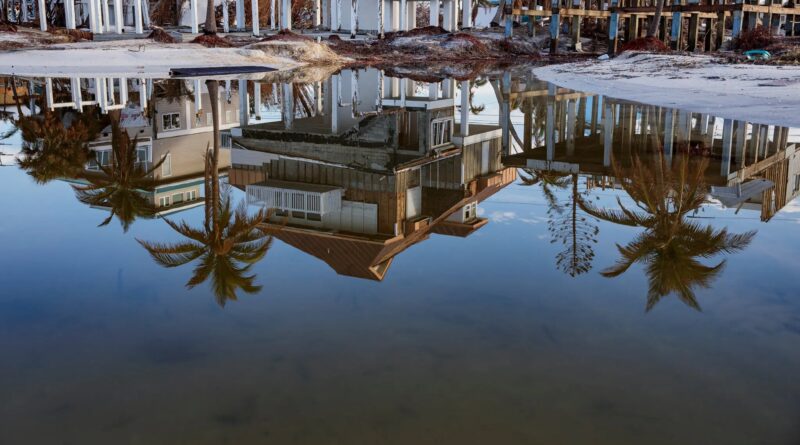Climate Change is Turning Florida Into a ‘Poison Paradise’ for Homeowners
Homeownership has long been a hallmark of the American dream, a symbol of generational wealth. However, these days, housing prices are through the roof and mortgage interest rates are the highest they’ve been in years. In states such as California, New York and Florida, even if you can afford to purchase a house, the ability to insure it is becoming even more difficult.
Banks, not known for being risk takers, won’t issue mortgages without the security of home insurance. So where does that leave homebuyers as major insurance companies pull out of climate-threatened zones?
Definitely in an unfathomable bind.
Climate change impacts are not just environmental — and are being felt across the globe, quite intently this summer. Every record-breaking heat wave leaves a mark. It might feel out of the realm of possibility for a resident of Miami to ever contemplate being a climate refugee, but that could happen if homeowners can’t find insurance coverage for their piece of paradise in the Sunshine State.
A steady increase of costly storms such as Hurricane Nicole and Hurricane Ian in 2022, which caused substantial damage to properties, coupled with insurance claim payouts, is leading insurance companies to drive up premiums or stop insuring homeowner policies in Florida altogether. In fact, Hurricane Ian was the costliest storm in Florida’s history, totaling over $112 billion in damages. The high number of insurance claims filed in the aftermath of these storms has strained insurance company resources, forcing them to reconsider their presence in the state.
What’s going to happen if we have another active hurricane season?
The growing financial burden on insurance providers due to these increasing weather-related disasters has prompted them to take drastic measures. Many major insurance companies are now faced with a difficult decision: either significantly raise premiums or altogether cease to offer homeowner insurance in Florida.
The companies are picking the former, leaving more than 100,000 homeowners without adequate coverage, putting their most significant investment at risk. Affected homeowners are left to navigate an uncertain landscape, leading to the new Florida nickname, “poison paradise.” Many homeowners are forced to seek alternative, often costlier, insurance options from smaller or specialized providers — or left without any coverage, putting their financial security in jeopardy.
Humans have varying degrees of risk aversion but I can’t imagine even the most daring person taking a chance on an uninsured property in the state that most sees activity during the precarious Atlantic hurricane season. In addition to the risk of hurricanes and tropical storms, Florida’s low-lying coastal areas are home to 3.5 million Floridians whose homes are at significant risk of flooding due to rising sea levels.
For years, Florida has been a sought-after destination for those fleeing the cold winters of the Northwest and Midwest. Retirees took their life savings and bought homes along our gorgeous coast, taking advantage of its stunning views, beautiful weather and an appealing lifestyle. However, the recent insurance crisis poses a significant threat to these investments and the economy at large.
This isn’t just a phenomenon happening to the uber-wealthy and their McMansions. With limited options for insurance, prospective buyers in all price ranges may be hesitant to invest in properties, leading local communities to suffer as the risk of financial hardship and foreclosure increases leading to decreased economic stability in the region.
What are the solutions? A greater investment in climate resilience measures to protect homes — such as using fire-resistant building materials and requiring roofs that can withstand hurricane-force winds — is a start.
Adopting resilient building practices with the hope of reducing the need for insurance claim payouts and providing insurance companies with greater confidence in insuring homes could also help. And congruently, the insurance industry at large must reassess its risk assessment models to better account for the impacts of climate change, incorporating climate data and projections into their calculations in order to more accurately price premiums and offer coverage without jeopardizing their financial stability.
The resulting policies are likely to be extraordinarily expensive, but that is the reality we created by ignoring the climate problem as long as we have.
Beyond insurance-specific actions, addressing the root cause of climate change remains crucial. Global efforts to mitigate greenhouse gas emissions are essential to slow down the pace of climate change and reduce the severity of its effects. The international community must continue to collaborate on climate initiatives and policy changes to protect communities, ecosystems and economies from the worst consequences of a warming planet.
But one point is clear: None of this is going to happen before the first storm of 2023 ravages our state.

